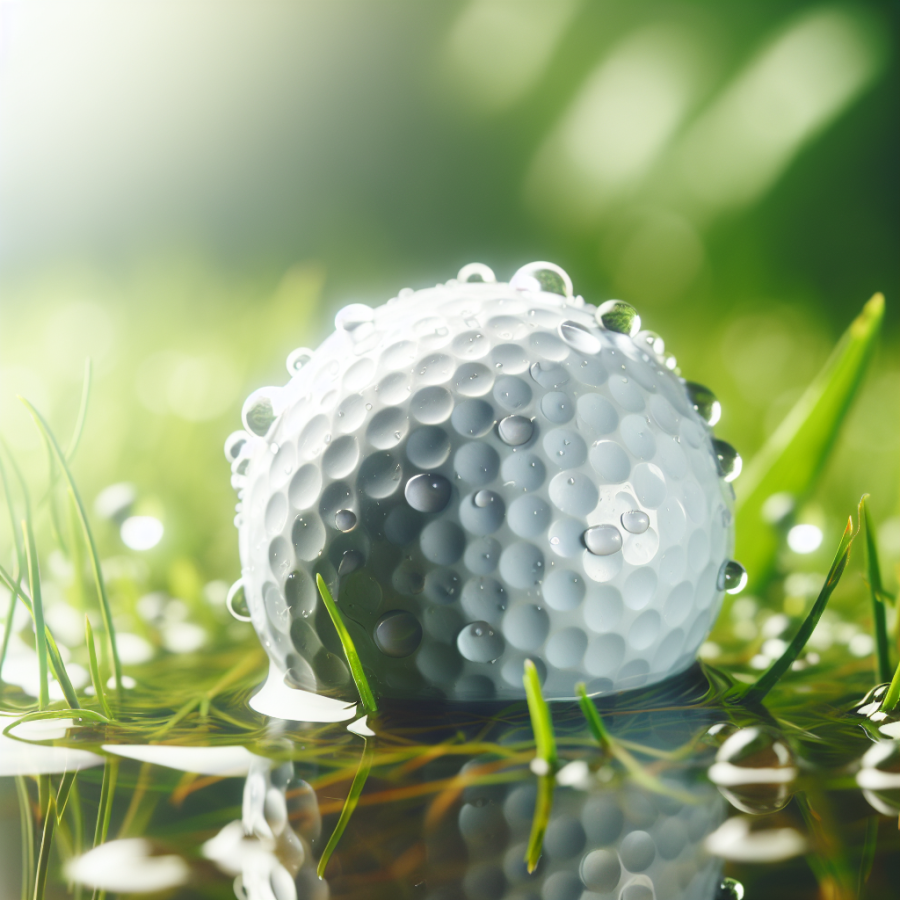Testing and Debunking the Myth: Can Golf Balls Actually Absorb Water?
A widely accepted belief among golfers is that golf balls can absorb water and this, in turn, can affect the ball's performance. These claims stem from the supposition that golf balls, especially older ones, can get waterlogged when they come into contact with water.
First, it is crucial to understand the basic structure of a golf ball. Golf balls are generally made up of solid rubber surrounded by a tough synthetic cover. The rubber core forms the ball's primary structure while the cover safeguards the ball from the impact of the golf club. So, the question arises - can these materials absorb water?
Before answering this question, let's take a closer look at the production process of golf balls. The manufacturing process incorporates high heat and pressure to mold and cure the materials. As a result, the ball becomes highly resistant, tough, and near-impenetrable. It's therefore challenging for water to seep into the ball.
Now onto the scientific explanation, rubber and synthetic materials are hydrophobic by nature. This means they naturally repel water and do not absorb it. The synthetic cover is also designed to be water-resistant, ensuring water doesn't infiltrate the rubber core.
Additionally, golf balls are subjected to vigorous testing procedures – including water absorption tests. These rigorous standards are put in place by official governing bodies like the United States Golf Association (USGA) and the Royal and Ancient Golf Club of St. Andrews (R&A). Golf balls that don't meet these stringent standards can't be utilized in professional golf.
However, this doesn't mean that golf balls are entirely immune to water. A crack or deep gouge in the ball's surface can potentially allow water to reach the core. In such cases, water exposure over extended periods might lead to tiny water droplet accumulation. Nonetheless, the amount of water a golf ball can absorb through damage is negligible and unlikely to alter its performance significantly.
While initially conducting my research, I came across numerous online threads and golf forums. It wasn't hard to find golfers who have conducted their own experiments related to the water absorption capacity of golf balls. They left balls submerged in water for a significant amount of time and subsequently tested their performance. The majority found no noticeable change in the balls' performance, thereby debunking the myth.
In conclusion, scientifically speaking, golf balls are not designed to absorb water nor should they under normal circumstances.
Read also:
The Ethical Dilemma: Fox Hunting in the Modern World
The Intriguing Science behind Waterlogged Golf Balls
As avid golfers would attest to, there's an ongoing debate around whether or not golf balls can get waterlogged - if they can absorb water over time and, consequently, their performance gets affected. The surprising reality is, yes, golf balls can get "waterlogged", but the science behind it leaves the term a bit of a misnomer.
Golf balls, due to their construction and material composition, can absorb water - but only under specific conditions. The standard golf ball has multiple layers, typically a rubbery core enveloped by a harder exterior shell, usually made of a durable, flexible plastic like urethane or Surlyn.
The explanation starts by understanding how these layers are constructed. The ball's exterior, although appears solid, is dotted with many tiny imperfections and pores. According to golf ball manufacturers, these microscopic gaps can, over time and under certain conditions, allow the slow ingress of water.
Key to water absorption is the duration a ball spends in a water body - the longer a golf ball is submerged, the higher the chances of it absorbing water. For instance, golf balls that have been left in water hazards on courses for an extended period are reported to show signs of ‘waterlogging.’
The temperature of the water is also a significant factor. Tests conducted show that balls immersed in higher temperature water tend to absorb more water than those in colder conditions. Warmer water speeds up the seeping process, prompting more water to permeate through the tiny exterior pores faster.
Another factor contributing to a golf ball's ability to absorb water is its outer layer's permeability. While premium balls made from soft urethane covers have good performance traits, such as improved spin rates, they are more prone to water absorption compared to their Surlyn-covered counterparts. Surlyn is less permeable to water, making it more resistant to getting waterlogged but lesser in performance compared to urethane.
Now, how does water absorption affect a golf ball's performance? A comprehensive study conducted by Golf Digest found that a water-absorbed golf ball can lose its “bounce” - its ability to rebound from an impact. As the rubber core absorbs water, it loses its elasticity, which significantly affects the ball’s overall performance. The research indicated that a ball's drive distance could be reduced by up to 5 yards, and the spin could be compromised by nearly 10%.




